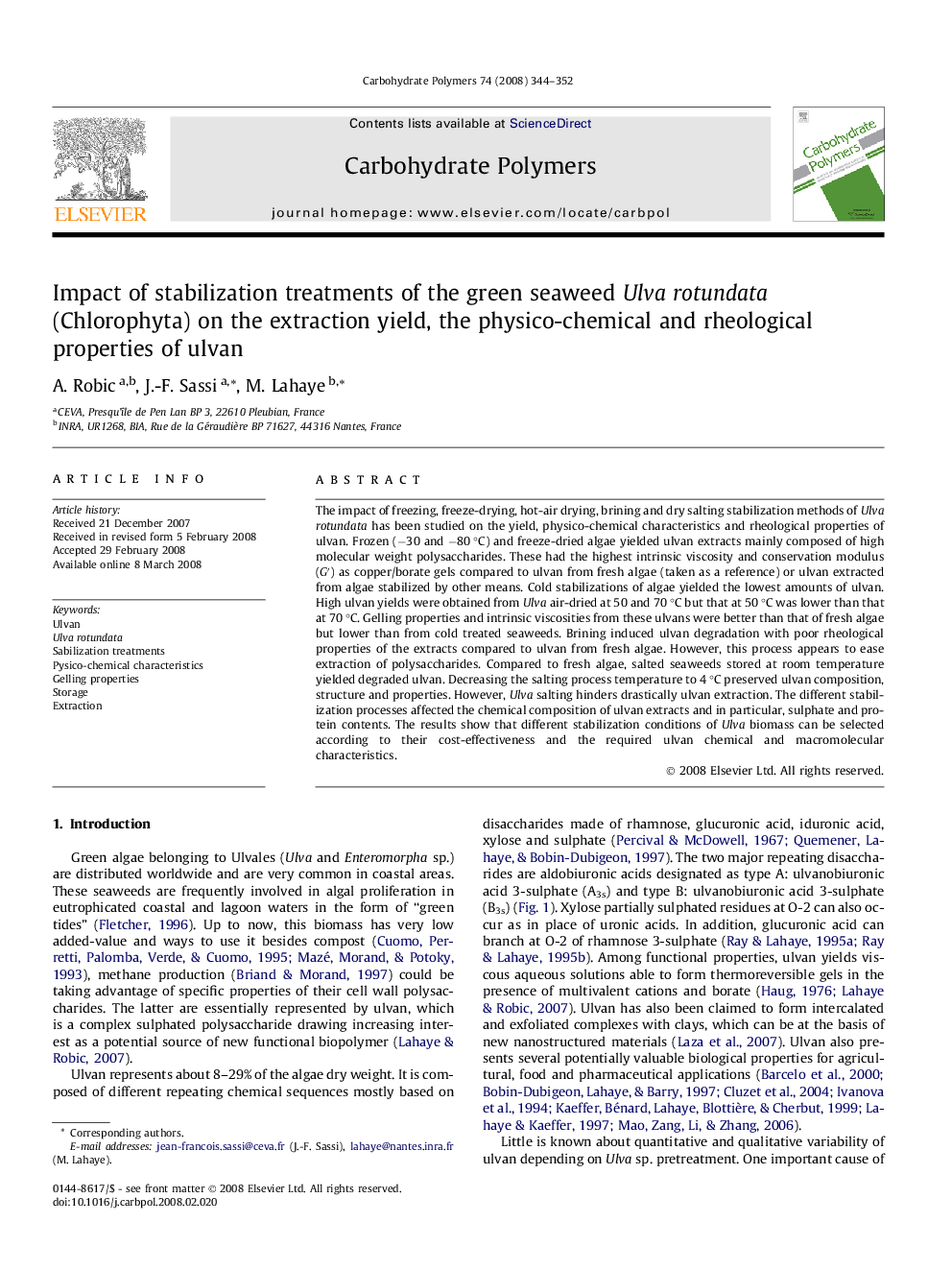| کد مقاله | کد نشریه | سال انتشار | مقاله انگلیسی | نسخه تمام متن |
|---|---|---|---|---|
| 1386395 | 982506 | 2008 | 9 صفحه PDF | دانلود رایگان |

The impact of freezing, freeze-drying, hot-air drying, brining and dry salting stabilization methods of Ulvarotundata has been studied on the yield, physico-chemical characteristics and rheological properties of ulvan. Frozen (−30 and −80 °C) and freeze-dried algae yielded ulvan extracts mainly composed of high molecular weight polysaccharides. These had the highest intrinsic viscosity and conservation modulus (G′) as copper/borate gels compared to ulvan from fresh algae (taken as a reference) or ulvan extracted from algae stabilized by other means. Cold stabilizations of algae yielded the lowest amounts of ulvan. High ulvan yields were obtained from Ulva air-dried at 50 and 70 °C but that at 50 °C was lower than that at 70 °C. Gelling properties and intrinsic viscosities from these ulvans were better than that of fresh algae but lower than from cold treated seaweeds. Brining induced ulvan degradation with poor rheological properties of the extracts compared to ulvan from fresh algae. However, this process appears to ease extraction of polysaccharides. Compared to fresh algae, salted seaweeds stored at room temperature yielded degraded ulvan. Decreasing the salting process temperature to 4 °C preserved ulvan composition, structure and properties. However, Ulva salting hinders drastically ulvan extraction. The different stabilization processes affected the chemical composition of ulvan extracts and in particular, sulphate and protein contents. The results show that different stabilization conditions of Ulva biomass can be selected according to their cost-effectiveness and the required ulvan chemical and macromolecular characteristics.
Journal: Carbohydrate Polymers - Volume 74, Issue 3, 4 November 2008, Pages 344–352